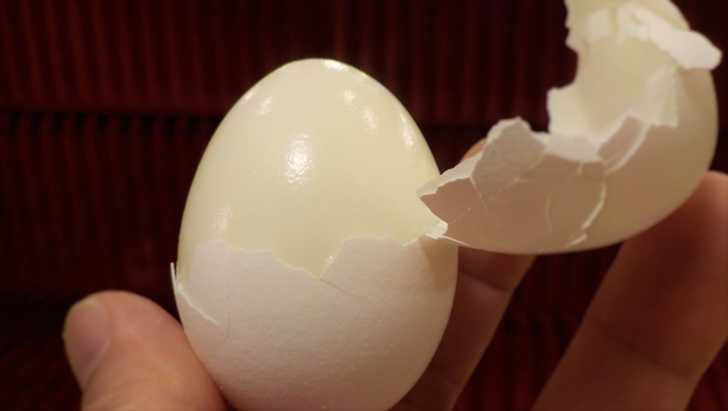ADVERTISEMENT
Renowned Chef Shares Hack to Peel Hard Boiled Eggs – Say Goodbye to the Struggle!
We’ve all been there: trying to peel a hard-boiled egg, only to end up with bits of egg white sticking to the shell, leaving a messy and unappealing result. It’s a frustrating experience that many of us have resigned ourselves to, but what if there was a simple solution to this age-old problem? Well, good news! Renowned chefs have been sharing a game-changing hack that promises to make peeling hard-boiled eggs a breeze.
Gone are the days of awkwardly scraping egg whites off the shell, or worse, ending up with an egg that looks like it went through a blender. Thanks to this brilliant method, you’ll be able to peel your hard-boiled eggs quickly and cleanly every time. Let’s dive into this hack that’s making a huge splash in kitchens everywhere!
The Problem with Peeling Hard Boiled Eggs
Before we get into the hack, it’s important to understand why peeling hard-boiled eggs is so challenging for many. Fresh eggs tend to have more alkaline pH levels, which causes the egg whites to bond tightly to the inner shell membrane. As a result, when you try to peel them, chunks of the egg white often get stuck, leading to an imperfect result.
On the other hand, older eggs are typically easier to peel because their pH levels increase as they age, which causes the egg whites to loosen from the membrane. So, if you’re using fresh eggs, you might end up with a frustrating peeling process.
The Chef-Approved Hard Boiled Egg Peeling Hack
After years of experimenting with different techniques, chefs have discovered a simple and effective way to make peeling hard-boiled eggs effortless—and it’s all about the ice water bath. Here’s the step-by-step guide on how to achieve perfect, easy-to-peel hard-boiled eggs every time:
Step 1: Cook the Eggs Perfectly
The first key to peeling hard-boiled eggs easily is cooking them properly. Overcooking can make the shells stick, while undercooking will leave you with a runny yolk. Here’s the ideal method for cooking eggs:
- Place your eggs in a pot and cover them with cold water (about 1 inch of water above the eggs).
- Bring the water to a boil over medium-high heat.
- Once the water starts to boil, reduce the heat to a simmer and cook for 9 to 12 minutes, depending on how firm you want the yolk.
- Immediately after cooking, transfer the eggs to an ice water bath (more on this in the next step).
Step 2: The Ice Water Bath Magic
The magic happens once the eggs are cooked. Instead of just letting them cool at room temperature, the key is to transfer them into a bowl of ice-cold water. This cools the eggs quickly, which helps separate the egg whites from the membrane. Here’s how to do it:
- Fill a large bowl with ice and cold water.
- Use tongs or a slotted spoon to transfer the eggs from the hot water directly into the ice water bath.
- Let the eggs sit in the ice water for about 10 minutes. This will stop the cooking process and allow the eggs to cool down quickly.
Step 3: Crack and Peel
Once your eggs have cooled, it’s time to crack and peel them:
- Gently tap the egg on a hard surface (like a countertop) to crack the shell.
- Start peeling from the wider end, where there’s typically an air pocket. This is the easiest spot to get under the membrane.
- The shell should come off in larger pieces without sticking to the egg white. You’ll be left with perfectly smooth, clean eggs that are ready to enjoy!
- For Complete Cooking STEPS Please Head On Over To Next Page Or Open button (>) and don’t forget to SHARE with your Facebook friends
Why the Ice Water Bath Works
The reason the ice water bath is so effective comes down to science. Rapid cool
